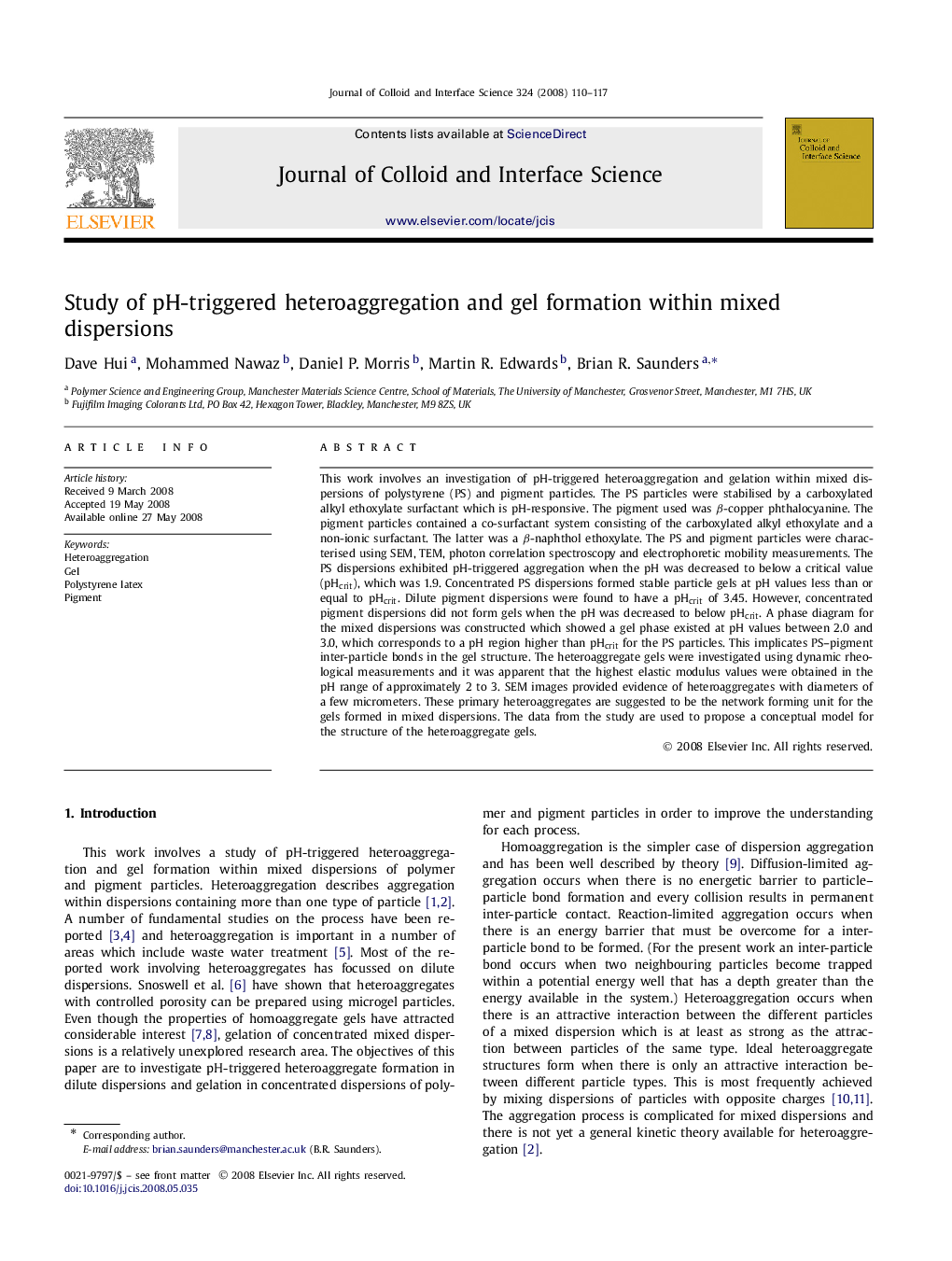| Article ID | Journal | Published Year | Pages | File Type |
|---|---|---|---|---|
| 611094 | Journal of Colloid and Interface Science | 2008 | 8 Pages |
This work involves an investigation of pH-triggered heteroaggregation and gelation within mixed dispersions of polystyrene (PS) and pigment particles. The PS particles were stabilised by a carboxylated alkyl ethoxylate surfactant which is pH-responsive. The pigment used was β-copper phthalocyanine. The pigment particles contained a co-surfactant system consisting of the carboxylated alkyl ethoxylate and a non-ionic surfactant. The latter was a β-naphthol ethoxylate. The PS and pigment particles were characterised using SEM, TEM, photon correlation spectroscopy and electrophoretic mobility measurements. The PS dispersions exhibited pH-triggered aggregation when the pH was decreased to below a critical value (pHcrit), which was 1.9. Concentrated PS dispersions formed stable particle gels at pH values less than or equal to pHcrit. Dilute pigment dispersions were found to have a pHcrit of 3.45. However, concentrated pigment dispersions did not form gels when the pH was decreased to below pHcrit. A phase diagram for the mixed dispersions was constructed which showed a gel phase existed at pH values between 2.0 and 3.0, which corresponds to a pH region higher than pHcrit for the PS particles. This implicates PS–pigment inter-particle bonds in the gel structure. The heteroaggregate gels were investigated using dynamic rheological measurements and it was apparent that the highest elastic modulus values were obtained in the pH range of approximately 2 to 3. SEM images provided evidence of heteroaggregates with diameters of a few micrometers. These primary heteroaggregates are suggested to be the network forming unit for the gels formed in mixed dispersions. The data from the study are used to propose a conceptual model for the structure of the heteroaggregate gels.
Graphical abstractWe investigate heteroaggregation and gel formation within mixed polystyrene/pigment dispersions stabilised by a pH responsive surfactant.Figure optionsDownload full-size imageDownload as PowerPoint slide
